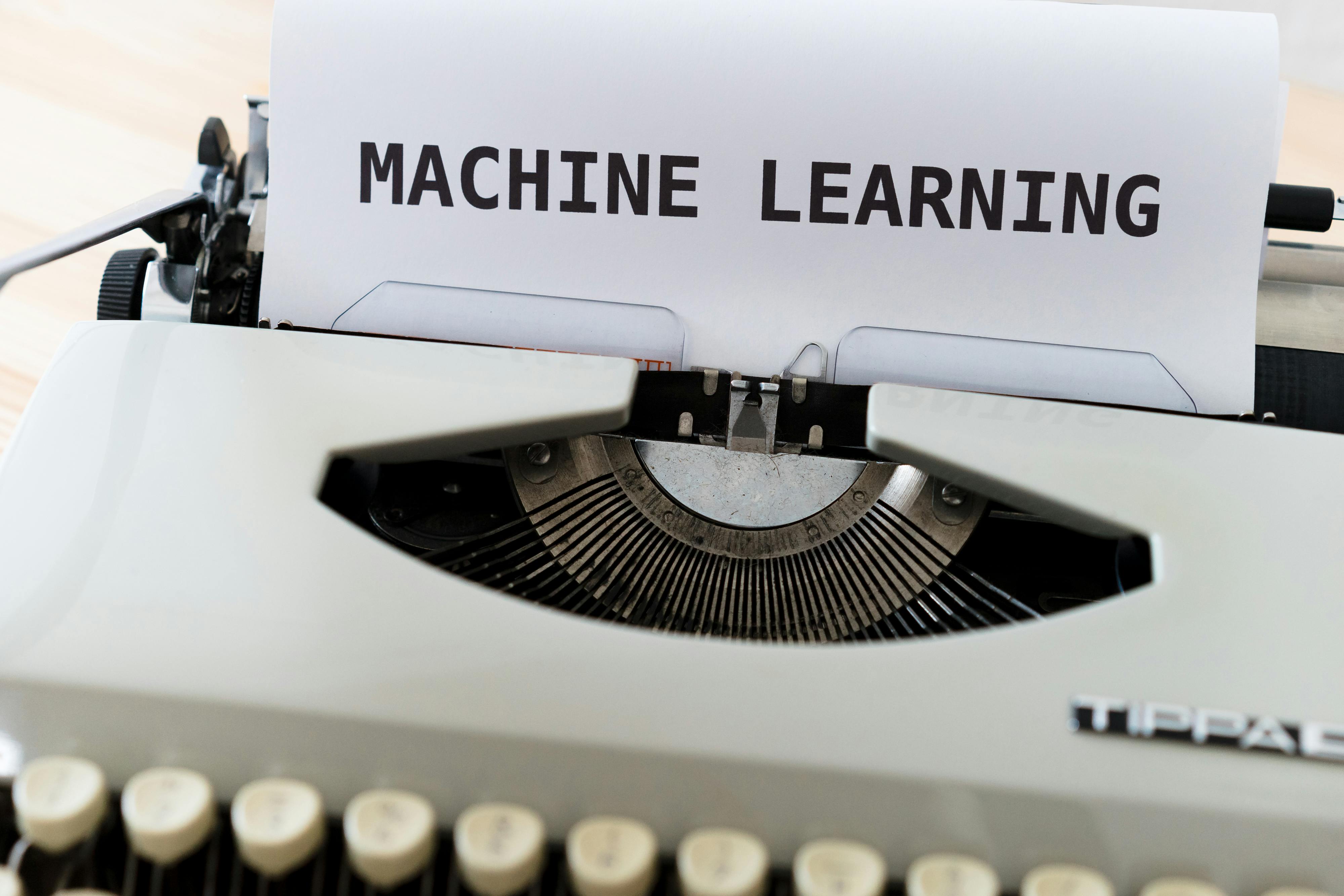 |
| Photo by Markus Winkler from Pexels |
1- What is Machine Learning?
Machine learning is a type of artificial intelligence (AI) that enables computers to learn and improve from experience without being explicitly programmed. It is based on the idea that machines can learn from data, identify patterns and make decisions with minimal human intervention. Machine learning has revolutionized many industries, including finance, healthcare, and entertainment.
2- Types of Machine Learning
There are three main types of machine learning: supervised learning, unsupervised learning, and reinforcement learning.
2-1 Supervised Learning
Supervised learning involves training a machine learning model with labeled data. Labeled data is data that has been tagged or categorized with a specific outcome or label. For example, a dataset of animal images that have been labeled as either cats or dogs.
The machine learning model learns to recognize the patterns in the data that correspond to the labels. Once the model is trained, it can make predictions on new, unlabeled data by identifying the patterns in the data that match the patterns in the training data.
Supervised learning is commonly used in applications like image and speech recognition, natural language processing, and predictive analytics.
2-2 Unsupervised Learning
Unsupervised learning involves training a machine learning model with unlabeled data. Unlabeled data is data that has not been categorized or tagged with a specific outcome or label. For example, a dataset of customer transactions that have not been categorized as fraudulent or legitimate.
The machine learning model learns to identify patterns and relationships in the data on its own. Once the model is trained, it can group the data into clusters or identify anomalies that don't fit into any group.
Unsupervised learning is commonly used in applications like customer segmentation, anomaly detection, and recommendation systems.
2-3 Reinforcement Learning
Reinforcement learning involves training a machine learning model to make decisions based on feedback from the environment. The machine learning model is given a goal and must take actions to achieve that goal, while receiving positive or negative feedback along the way.
Reinforcement learning is commonly used in applications like robotics, game playing, and recommendation systems.
3- Applications of Machine Learning
Machine learning has numerous applications across a wide range of industries, from healthcare and finance to retail and entertainment. Some examples of machine learning applications include:
- Finance : Machine learning is used to detect fraud in credit card transactions, predict stock prices, and optimize portfolio management.
- Healthcare : Machine learning is used for medical diagnosis, personalized treatment plans, and drug discovery.
- Entertainment : Machine learning is used to personalize recommendations on streaming platforms like Netflix and Spotify.
- Transportation : Machine learning is used in autonomous vehicles to recognize road signs, detect obstacles, and make decisions in real-time.
4- Limitations and Challenges of Machine Learning
While machine learning has many advantages, it also has some limitations and challenges. One of the biggest challenges is the need for high-quality data. Machine learning models can only learn from the data they are trained on, so if the data is biased or incomplete, the model will produce biased or incomplete results.
Another challenge is the "black box" problem. Machine learning models can be difficult to interpret, making it difficult to understand how they arrive at their decisions. This can be problematic in situations where transparency and accountability are important.
In addition, machine learning models can be vulnerable to adversarial attacks, where attackers manipulate the data to trick the model into making incorrect predictions.
5- Conclusion
Machine learning is a powerful technology that has the potential to revolutionize a wide range of industries. By analyzing data and making predictions or decisions based on that analysis, machine learning can help organizations make more accurate and informed decisions. However, it is important to recognize the challenges and concerns associated with machine learning, including the need for high-quality data, the potential for bias and discrimination, and the impact on the job market. By taking a responsible and ethical approach to machine learning, we can help ensure that this technology is used for the benefit of society as a whole.
References:
- Alpaydin, E. (2010). Introduction to machine learning (2nd ed.). MIT Press.
- Bishop, C. M. (2006). Pattern Recognition and Machine Learning. Springer.
- Goodfellow, I., Bengio, Y., & Courville, A. (2016). Deep Learning. MIT Press.
- Hastie, T., Tibshirani, R., & Friedman, J. (2009). The Elements of Statistical Learning: Data Mining, Inference, and Prediction. Springer.
- Jordan, M. I., & Mitchell, T. M. (2015). Machine learning: Trends, perspectives, and prospects. Science, 349(6245), 255-260.
- Murphy, K. P. (2012). Machine Learning: A Probabilistic Perspective. MIT Press.
